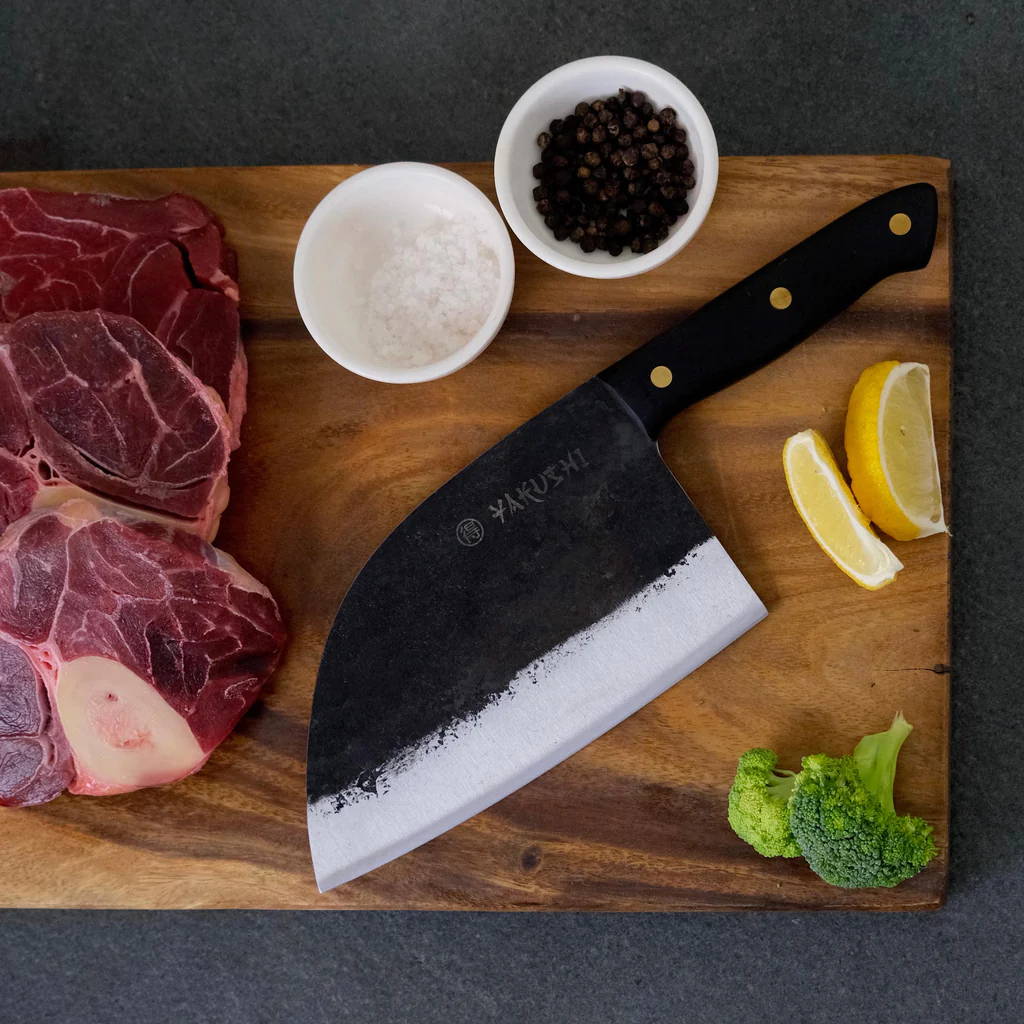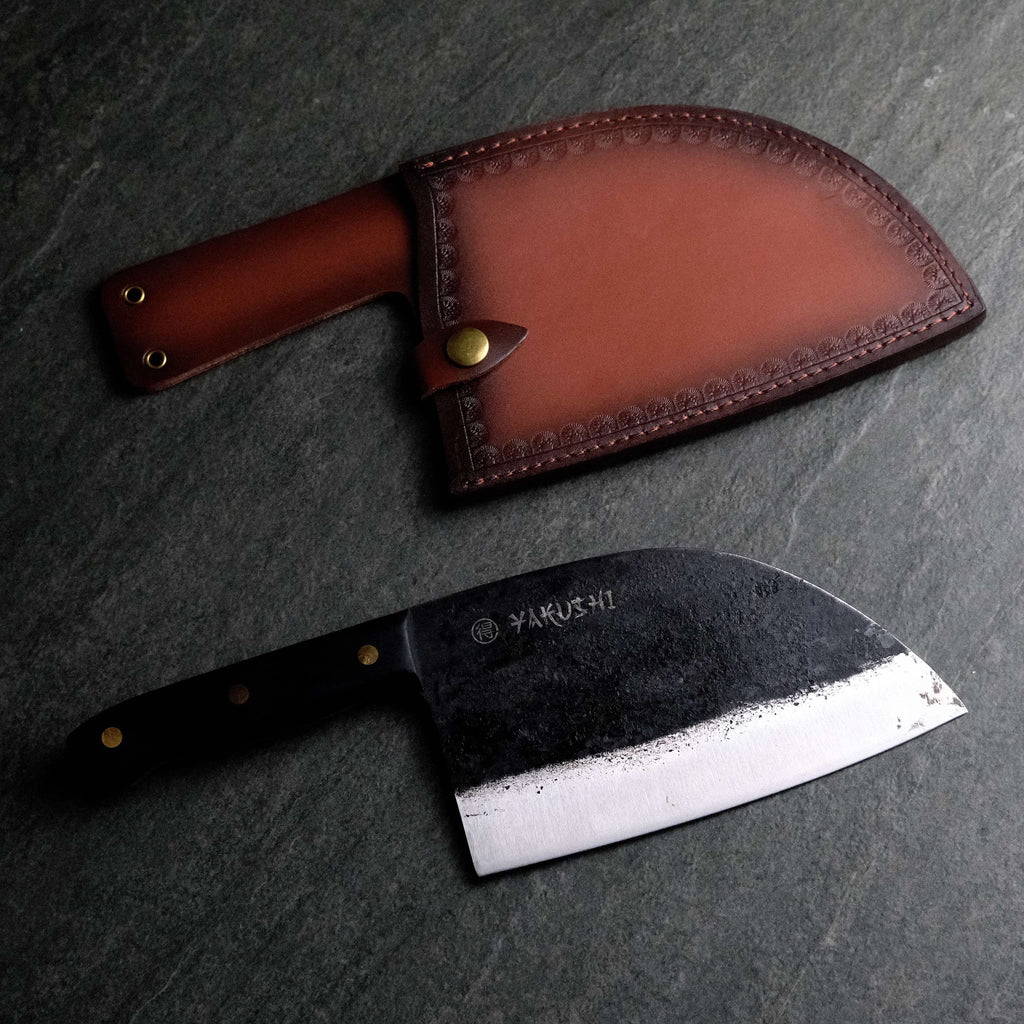The Top Meat Cutting Knives For
Your Cutlery Set This Holiday Feasts

Types of Meat Cutting Knives

Butcher knives
These knives are designed specifically to cut through raw meats. Butcher knives usually have wide, heavy, broad blades made of high-carbon stainless steel. They are perfect for slicing through bigger chunks of meat or even bones.
Chef's Knives:
The control, balanced weight, and ergonomic grip of a chef's knife are its most important features. Its blade, made of materials like German steel or carbon stainless steel, usually has a length of 6 to 12 inches. Ideally, a Serbian chef knife is proiritized because of its versatility, including dicing vegetables, chopping nuts, slicing herbs, and even carving and performing tough meat cuts.
Carving knife
A meat carving knife is made specifically for cutting cooked and raw meat. It features a sharp pointed tip, used to score or carve designs into the flesh. Carving knives should only be used on cooked or uncooked meat; never on bread, or vegetables. They are used to make long, straight cuts, which are ideal for slicing prime rib, or turkey.
Boning knife
A boning knife is ideal for separating the flesh from the bones in meat or fish before slicing them. It is used for trimming and slicing meat according to your preferences, and it is manufactured with an excellent quality sharp blade. This knife is meant to reach in close to the bone and extract flesh from it with minimal waste.
A Meat Cleaver
A meat cleaver comes with a large and broad blade that helps you carve large chunks of meat or chop cartilage. While a cleaver may appear intimidating compared to butcher knives, it is far lighter in weight and appearance. This makes slicing meat more efficient, assuring that no one eats bone shards.
What to Look for in a Meat Cutting Knife
Weight
Personal preference plays a big role in weight. Some believe that a heavy knife would be best for chopping meat as it would allow for the use of gravity. Others believe that a lighter blade makes chopping meat more manageable and precise. The best approach is to purchase a knife that feels comfortable in your hand.
Size
When it comes to size, you need to consider taking the task you are doing as well as how the knife will fit in your hand. Longer blades are required for larger meat portions, while smaller food items can be done with shorter blades.
Balance
When holding a knife to cut meat, the user's palms serve as the primary indicator of balance, to evaluate whether or not the knife is balanced correctly. If your weight is on the back of the handle or the blade and you are uncomfortable with it, this is not the piece for you.
Moreover, you need to conduct a side-to-side balancing check. otherwise, it will feel unsteady and tilt over to one side.
Type of blade
When chopping meat, several blade designs are used for various purposes. some common blade options include;
- Plain edge blades: The most popular types of kitchen blades are those with a plain edge. Without fraying, they cut thick, tender foods into clean pieces.
- Serrated edge blades: Blades with a serrated edge have jagged edges that resemble a saw blade in appearance. For slicing through tough, thick meat, these knives work best.
- Hollow-edge blades: The design of these knives has a design with indentations above the edge of the blade. With this design, a cleaner cut can be made and food will not stick to the blade while being cut. It works great for getting thin meat slices.
- Granton blades: The scallops on Granton blades allow air to pass between the blade and the meat you are slicing. As you cut, this feature helps prevent the meat from ripping or tearing.
Handle
Knife handles could be made of steel, plastic, or wood. Each has strengths of its own. For instance, while wood might have a nice appearance, maintaining it can be challenging. On the other hand, plastic handles can split and are slick, which is especially dangerous when slicing through meat. The most hygienic, easy-to-maintain, and long-lasting handles are those made of stainless steel. But when they are wet, they can also be clumsy and slippery.
The Top Meat Cutting Knives for Holiday Feast
It is not necessary to keep all kinds of professional meat cutting knives in your kitchen, instead, you can keep a chef's knife and a butcher Knife. These two knives are enough to perform all sorts of meat cutting tasks and are versatile enough for most home kitchens. They provide the functionality needed for preparing and carving meats without the need for more specialized knives like boning knives, or meat cleavers.


Leave a comment
This site is protected by hCaptcha and the hCaptcha Privacy Policy and Terms of Service apply.